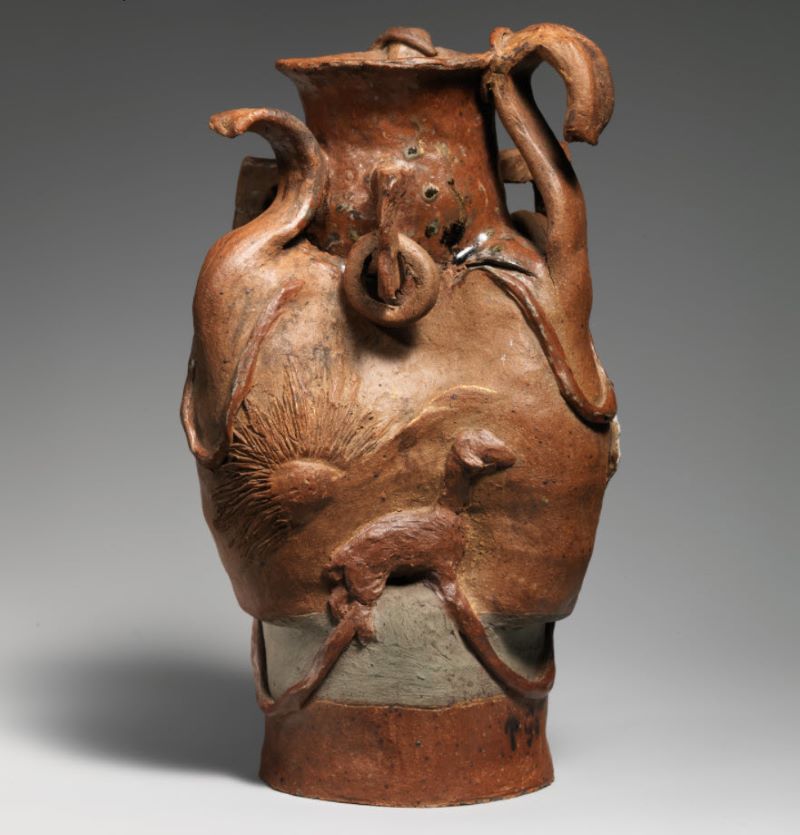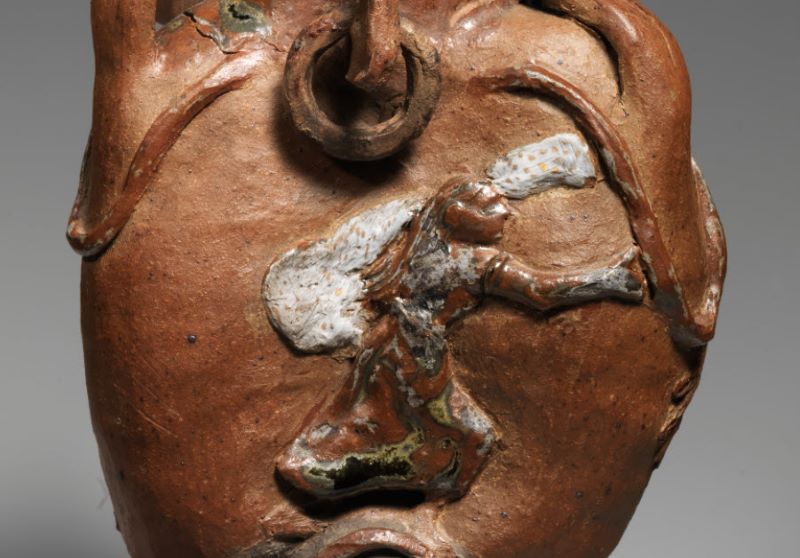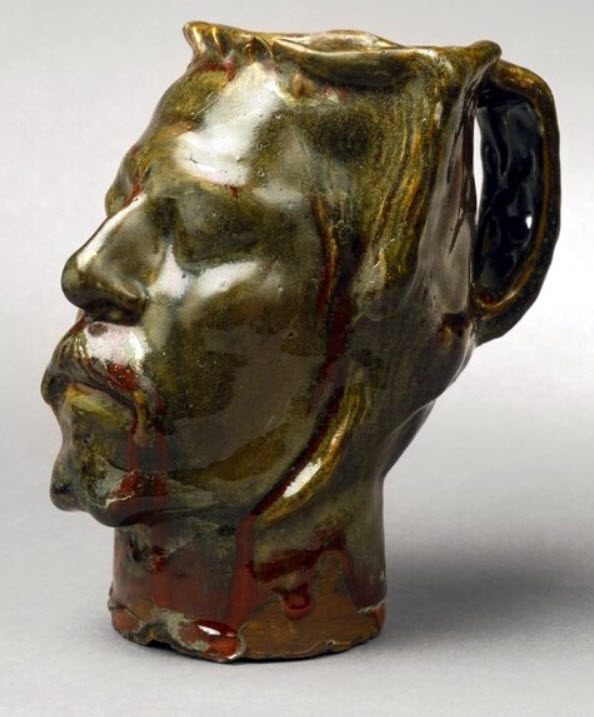Paul Gauguin is known primarily as a painter. But he also explored ceramics, first during the period 1886-1888 (following his travels to Brittany, Panama and Martinique), and then again from 1893-1895 (after returning to Paris from his first trip to Tahiti). Gauguin did not work in ceramics while in Tahiti because clay was not available. Roughly 60 of his pieces survive to this day.

While many painters were asked to decorate ceramics at this time, Paul Gauguin developed a deeper, more thorough approach to ceramics than most. He became a ceramic maker in a fundamental sense, employing slab and coil construction for most of his pieces.
Early Period Ceramics (1886-88)
Gauguin’s first encounter with ceramics came about through a friendship with ceramicist Ernest Chaplet. Chaplet helped Gauguin learn essential ceramics skills, and they worked collaboratively for awhile on the outskirts of Paris. Together, the two men created over 50 stoneware pots and sculptures. (Chaplet later also worked with August Rodin, the sculptor.)
Gauguin’s initial foray into ceramics did not lead to the commercial success he had hoped for. Indeed, for many years Gauguin’s ceramic work was essentially lost behind the success of his paintings.

Gauguin initial ceramic work is characterized by asymmetrical, hand-built shapes in dark brown stoneware, decorated with rough imagery reminiscent of themes found in his paintings of the time. Below are a few pieces from this early phase.
There is a really detailed examination (including a 3D model) of this first piece on the Art Institute of Chicago’s website. You have to dig for it, so I’ll include a few tidbits. Here is the full link (but you have to advance through the reader to get to this piece).

Experts differ on when they think Gauguin made this vase (some say during the winter of 1886-87, others say during the winter of 1887-88). There are some sketches in Gauguin’s sketchbooks that he took to Martinique in the Caribbean. Regardless, Gauguin apparently liked the coarse, matt nature of the clay body, much as he enjoyed unvarnished surfaces of his canvases. He had little concern for the functional nature of his ceramic creations. And his additions of decorative elements (plant and animal forms) is typical of his work. One author notes, “The degree of abstraction that [Gauguin] favored introduces an ambiguity of scale and makes it difficult – and perhaps futile – to try to identify the plant, but it is probably a tree rather than a flower, with leaves standing for whole branches, as in medieval art or the reliefs of the Buddhist temple of Borobudur in central Java that Gauguin was beginning to use as models.”
Some other early ceramics:





Gauguin created the following self-portrait in the form of a mug in early 1889 after experiencing two traumatic events. First, Gauguin had lived for several months with fellow artist Vincent Van Gogh in the south of France, and during this period Van Gogh cut off a portion of his ear. A few days later, Gauguin witnessed the beheading of a convict in Paris. It is hard to not recognize some of these elements in Gauguin’s mug: the deep red glaze gathering at the base of the mug, etc.

Later Period Ceramics (1893-95)
I found information on Gauguin’s later ceramics harder to come by. Here are a few images.



Finally, here is a link to an exhibit of Gauguin’s ceramics (and other, non-painting artwork) at the Museum of Modern Art in 2014.
I found a ceramic fish plate in Portugal signed by a P Gauguin. I would like to know if he painted anything of this sort, please?
LikeLike
Joyce, I wouldn’t be the best person to answer your question. You might try contacting Sothebys or Christies. If you really have a piece by Paul Gauguin it would be valuable.
LikeLike